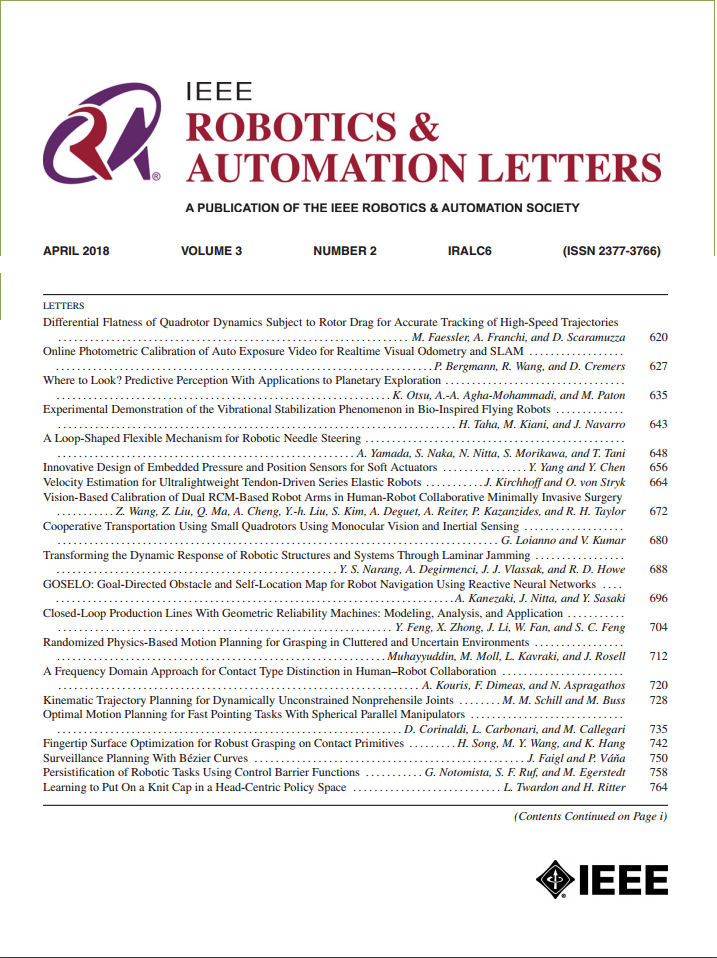Minimum-Length Coverage Path Planning for Grid Environments With Approximation Guarantees
IF 5.3
2区 计算机科学
Q2 ROBOTICS
引用次数: 0
Abstract
We focus on planning minimum-length robot paths to cover environments using the robot's sensor or coverage (e.g., cleaning) tool. Many algorithms use the following framework: (i) compute a grid decomposition of the environment, (ii) partition the grid to be covered by non-overlapping具有近似保证的网格环境的最小长度覆盖路径规划
我们专注于规划最小长度的机器人路径,以覆盖使用机器人的传感器或覆盖(例如,清洁)工具的环境。许多算法使用以下框架:(i)计算环境的网格分解,(ii)划分网格以由不重叠的覆盖线(直线路径)覆盖,以及(iii)计算覆盖线的成本最小化巡回以获得覆盖路径。虽然这个框架的目标是最小化路径上的转弯,但它不能保证最终的路径长度。在这封信中,我们证明了该框架保证覆盖路径的长度为$(1 + 1.5\gamma)$乘以最优,其中$\gamma > 1$是解决度量旅行商问题(metric- tsp)的近似因子。在此之后,我们提出了最小长度覆盖近似(mlc -近似)方法,该方法修改了该框架,以实现近似因子$(1.5 + \epsilon)$,其中$\epsilon \ll 1$取决于覆盖线的数量。MLC-Approx不是计算覆盖线路的巡回,而是合并覆盖线路的最小长度子巡回,同时最小化合并所增加的转弯。我们还提出了MLC-Approx的懒惰变体,以更快的经验运行时间达到相同的结果。我们使用真实世界环境的地图在模拟中验证mlc - approximate,并与最先进的CPP方法进行比较。
本文章由计算机程序翻译,如有差异,请以英文原文为准。
求助全文
约1分钟内获得全文
求助全文
来源期刊

IEEE Robotics and Automation Letters
Computer Science-Computer Science Applications
CiteScore
9.60
自引率
15.40%
发文量
1428
期刊介绍:
The scope of this journal is to publish peer-reviewed articles that provide a timely and concise account of innovative research ideas and application results, reporting significant theoretical findings and application case studies in areas of robotics and automation.
 求助内容:
求助内容: 应助结果提醒方式:
应助结果提醒方式:


